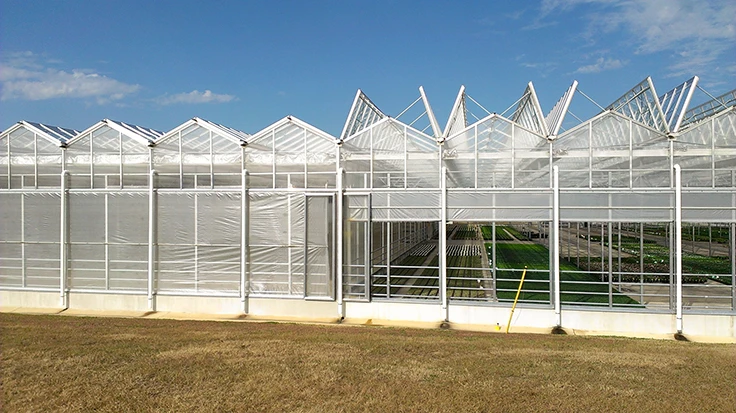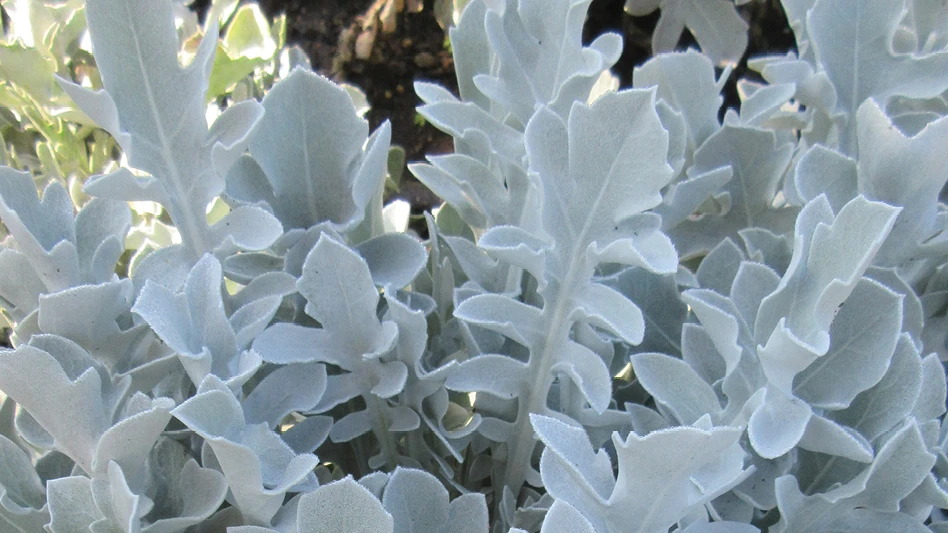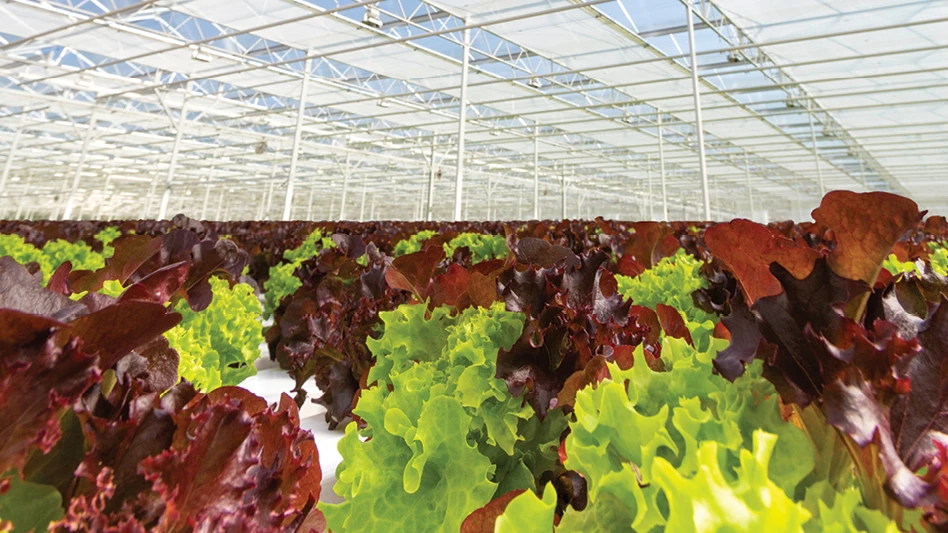
Ornamental growers have seemingly endless options when it comes to choosing a new structure for their operation. They must factor in types of materials, labor costs, square footage, advanced components, water availability and more. But the structure’s roof may be the most important consideration of all, as it often directly correlates with the overall climate of the growing environment.
Depending on the plants grown, growers may want the roof to be wide open to make use of natural elements, while keeping control of the greenhouse’s conditions. Rough Bros. Southeast Regional Sales Manager James Parris explains how open roof structures can provide big benefits.
1. Improved air flow
The fully vertical roof opening is one of the biggest perks of an open roof structure. It allows the grower to create an environment similar to the outdoors, which can harden off plants so that they perform better during shipping, while they’re on display at retail and after they’re planted in the landscape, according to Parris. “The plants acclimate quicker once they’ve been in that open roof [environment] for at least the last stage of growth,” Parris says. The design also reduces the need for PGR applications, as DIF and DIP can be maximized.
2. Options to adjust the opening
In the event of rainy or snowy weather, the structure’s open roof panels can be adjusted to protect against unwanted moisture, yet still allow for air flow. The peak gutter at the very top of the structure catches precipitation, while the roof can remain open about 4 inches to provide convection.
Many growers gradually open up the roof throughout the day, starting at just 10 to 15 percent in the morning to purse the humidity and moisture out so that they don’t shock the crop – then they’ll gradually open up until mid morning. “In the afternoon, they’ll start to close it back down so they can get some solar gain for heating overnight, which helps with the chill efficiencies,” Parris says.
3. Sidewall additions for amplified circulation
Open roof structures have sidewall options to further maximize air movement. While some growers use fans to increase air movement, “Most folks have been doing the sidewall roll-up curtains so that they’re able to open those sides up and get that convection through the house a lot quicker to kick up the ventilation,” Parris says.

4. Ideal for annuals
These varieties are sure to do well in an open roof structure, Parris says, especially if the greenhouse has a heated concrete floor. “You can get that heating directly to the roots. That’s something that works well for winter crops,” he adds. But hanging basket growers also benefit from open roofs because of the structure’s added light exposure.
5. Superior light levels
Opening up the roof means more sunshine can be let into the greenhouse, even if the roof is partially closed during the morning or later afternoon, Parris says. And if growers opt for the diffused poly coverings, that will only help. “You’ll be spreading your light out more evenly,” Parris says. Ultimately, increased light levels lead to more crop turns out of the greenhouse.
There are four main coverings used for the roof glazing material
- Polyethylene film which provides good light levels for most crops, provides insulation properties and gives you the ability to create cost effective fixed roofs in the open roof range as well. Diffused versions offer even better light levels for taller houses. RBI mainly offers 4-year 6mil to help reduce replacement cost and extend life of the covering.
- 8mm twin-walled polycarbonate or acrylic for extended life of the covering as well as improved insulation factor for energy efficiency. These are used quite a bit for retail facilities as well.
- 4mm tempered glass for optimizing light levels and life expectancy of your covering. Glass along with energy curtain usage provides you the complete spectrum of light required for any crop.
6. Practical retail applications
Parris says that he has customers on the retail side who are using open roof structures as well because of the ambient temperature. Plus, with natural ventilation and air flow, the needs for fans and pads is significantly reduced, which lessens white noise in the greenhouse and creates energy savings. Lastly, the overall environment is more pleasing for garden center patrons. “The customers feel like they’re not getting cramped into an older style greenhouse with a low ceiling,” he adds.
Photos courtesy of Rough Brothers
Latest from Greenhouse Management
- Veseris expands in turf and ornamental with acquisition of Tessman and Lynde companies
- BioTherm launches Ultimate Grower Climate Control System
- Jess Lyga joins Bailey sales team
- Happy holidays from the GIE Media Horticulture Group!
- North Carolina Nursery & Landscape Association announces new executive vice president
- Plant Development Services, Inc. unveils plant varieties debuting in 2025
- Promo kit available to celebrate first National Wave Day on May 3
- Applications now open for American Floral Endowment graduate scholarships





